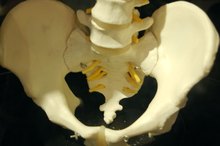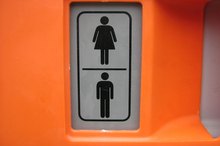Congestive Epididymitis Treatment
There are two kinds of epididymitis: congestive and chemical. Chemical epididymitis can occur from drugs such as amiodarone or from the backflow of urine into the epididymis. Congestive epididymitis, however, tends to occur as a component problem after genito-urinary surgery, where it is part of a condition known as post-vasectomy pain syndrome.
The Cause of Congestive Epididymitis
Epididymitis is denoted by inflammation in the epididymis (the curved structure at the back of the testicle where sperm matures). Congestive epididymitis occurs after a vasectomy, most commonly a closed-ended procedure where the vas deferens--the tube sperm travels through--is clamped shut, and back pressure builds to painful levels in the epididymis, according to Cory G. Christiansen, MD, and Jay I. Sandlow, MD.
The other type of vasectomy, called open-ended, leaves one end of the vas deferens unobstructed, allowing for a release of pressure in the epididymis. Christiansen and Sandlow note that, though congestive epididymitis is in fact a possible consequence of a vasectomy, there are disagreements on what the precise cause is.
- Epididymitis is denoted by inflammation in the epididymis (the curved structure at the back of the testicle where sperm matures).
- Congestive epididymitis occurs after a vasectomy, most commonly a closed-ended procedure where the vas deferens--the tube sperm travels through--is clamped shut, and back pressure builds to painful levels in the epididymis, according to Cory G. Christiansen, MD, and Jay I. Sandlow, MD.
Symptoms
What Are the Causes of Painful Ejaculation?
Learn More
Congestive epididymitis symptoms include swelling or heaviness in the testicles, mild to excruciating pain in the scrotum and potentially a low-grade fever, according to Sherry Baker ("Understanding Blue Balls") 1. Several other possible signs are a lump in the testicle, discomfort in the lower abdomen and pelvis, and enlarged lymph nodes in the groin. These symptoms, according to Christiansen and Sandlow, most often show up five to seven years after a vasectomy.
Treatment Options
Men who suffer from congestive epididymitis have several treatment options open to them. These range from a regimen of bed rest and pain relievers for the lightest symptoms of the condition up to a variety of surgical procedures for post-operative epididymal pain.
From a surgical standpoint, the four main options are a vasectomy reversal, removal of the epididymis, removal of the testicles entirely, or transition to an open-ended vasectomy. A vasectomy reversal is a procedure whereby the vas deferens is unblocked or the cut ends reconnected, relieving the pressure inside the epididymis when the flow is reinstated.
Somewhat similar to a vasectomy reversal is a transition from a closed-end vasectomy to an open-ended vasectomy. This involves unblocking one of the tubes (either upper or lower) leading from the vas deferens, and results in relieving the epididymal pressure build-up. This procedure is different from a vasectomy reversal in that you're unable to get anyone pregnant after this transition.
An epididymectomy is the proper name for the total surgical removal of the epididymis. This procedure is a surefire way to eliminate pain in the epididymis and, along with an orchiectomy (removal of the testicles), is a permanent solution.
- Men who suffer from congestive epididymitis have several treatment options open to them.
- From a surgical standpoint, the four main options are a vasectomy reversal, removal of the epididymis, removal of the testicles entirely, or transition to an open-ended vasectomy.
Related Articles
References
- Understanding Blue Balls: Hey Guys: Don’t Be Embarrassed to Get The Facts About Epididymitis by Sherry Baker
- Urology Care Foundation. (2019). What is a Vasectomy?
- Batz D, Greenberg JA. Sterilization in the United States. Rev Obstet Gynecol. 2008 Winter; 1(1): 23–32.
- Cook LA, Pun A, Gallo MF, Lopez ML, Van Vliet HAAM. Scalpel Versus No-Scalpel Incision for Vasectomy. Cochrane Database Syst Rev. 2014 Mar 30;2014(3):CD004112. doi:10.1002/14651858.CD004112.pub4
- Viera AJ. (2019). Vasectomy. O'Leary MP, ed. UpToDate. Waltham, MA: UpToDate.
- American Urological Association. (2015) Vasectomy Guideline.
- Benn P, Lupton M. Sterilisation of young, competent, and childless adults. BMJ. 2005 Jun 4; 330(7503): 1323–1325. doi:10.1136/bmj.330.7503.1323
- Cleveland Clinic. (2020). Vasectomy (Male Sterilization): Procedure Details
- John Hopkins Medicine. Vasectomy.
- Viera AJ. (2019). Patient education: Vasectomy (Beyond the Basics). Richie JP, ed. UpToDate. Waltham, MA: UpToDate.
- U.S. Centers for Disease Control and Prevention. (Updated April 2020). Reproductive health: Contraception.
- Adams CE, Wald M. Risks and Complications of Vasectomy. Urol Clin North Am. 2009 Aug;36(3):331-6. doi:10.1016/j.ucl.2009.05.009
- Sinha V, Ramasamy R. Post-vasectomy pain syndrome: diagnosis, management and treatment options. Transl Androl Urol. 2017 May; 6(Suppl 1): S44–S47. doi:10.21037/tau.2017.05.33
- Patel AP, Smith RP. Vasectomy Reversal: A Clinical Update. Asian J Androl. May-Jun 2016;18(3):365-71. doi:10.4103/1008-682X.175091
Writer Bio
Matthew Delman is a writer and professional editor based in Eastern Massachusetts, with interests in a variety of topics -- most notably health, education, biotechnology, pharmaceuticals, technology, and video games. He is currently working on getting a fantasy novel ready to submit for representation.









